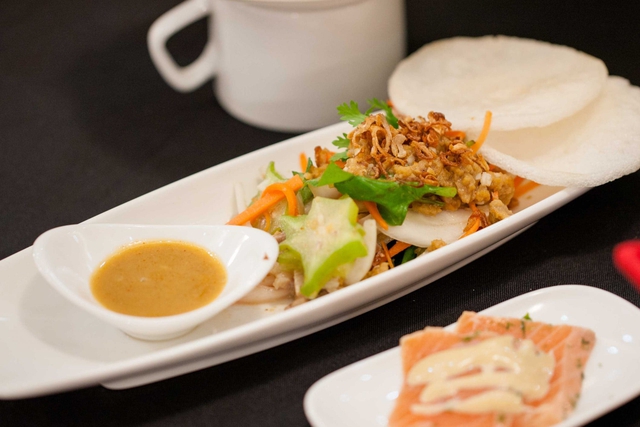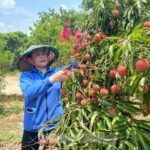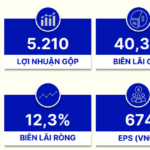A Rustic Delicacy Conquering Fastidious Markets
Sa Giang Export-Import Joint Stock Company was established in 1960 in Sa Dec, Dong Thap. The Sa Giang brand inherits and develops from the traditional shrimp cracker bakery founded by Mr. Le Minh Triet.
In 1970, Sa Giang won its first international award, a Silver Medal at the Osaka Fair in Japan. Before 1975, France was the main export market for this enterprise.
In 1997, Sa Giang became one of the first 18 Vietnamese enterprises to be granted an export code to the European market. A year later, the company expanded its market reach, improved its designs, and enhanced its product quality. The reputation of Sa Giang shrimp crackers was firmly established in foreign markets.

In 2004, the company transitioned to a joint-stock model and was listed on the Hanoi Stock Exchange. A significant turning point came in 2021 when it became a subsidiary of Vinh Hoan Corporation (VHC), with a majority stake of over 76.7%.
Thanks to its focus on technology investment and the application of modern management models, Sa Giang has continuously expanded its production scale over the past two decades.
Starting in 1999, the company began operating its first factory with an annual capacity of 800 tons. By 2003, Sa Giang had put into operation another factory with a capacity of 2,500 tons per year, and by 2010, the second enterprise had upgraded its capacity to 4,500 tons annually.
The company’s flagship product is Sa Giang shrimp crackers , made from specialty shrimp in Dong Thap, combined with cassava root flour, rice flour, and natural spices. This rustic delicacy is well-loved in Vietnam. Sa Giang has exported to over 50 countries, including demanding markets such as the US, EU, Japan, the UK, and France. Currently, shrimp crackers account for approximately 80% of the company’s revenue structure.
Sa Giang has continuously expanded its capacity over the years, starting from 200 tons per year in its early days to a remarkable 9,000 tons per year today.
In addition to the traditional crackers, Sa Giang has diversified its product range with crab and squid crackers, vegetarian and organic options, and expanded into other categories such as pho, hu tieu rice noodles, rice paper, and condiments like dipping sauces, soy sauce, and fish sauce.
Sa Giang’s Current Operations
Regarding business operations, from 2019 to 2024, Sa Giang’s export revenue consistently grew. According to the 2024 financial report, Sa Giang achieved more than VND 707 billion in net revenue from sales, a significant increase from nearly VND 455 billion in 2023. Of this, the company earned over VND 500 billion from exports, a surge of over 71% compared to 2023.
The company’s after-tax profit in 2024 increased by approximately 94.78% compared to 2023, rising from VND 51.4 billion to nearly VND 100.2 billion.
In the financial statement explanation, the enterprise attributed the profit surge mainly to the significant increase in sales volume and revenue in 2024 compared to the previous year, which boosted profits. Additionally, Sa Giang’s financial income rose, positively contributing to the overall profit.

Sa Giang anticipates that 2025 will remain challenging due to unstable prices of primary materials directly impacting their sales policies, reducing proactiveness in business planning and profitability.
Moreover, the company’s machinery and equipment require periodic maintenance and replacement to ensure stable production, maintain product quality, and meet the stringent standards of the international market.
Consequently, Sa Giang plans to achieve a net revenue of VND 870 billion this year, equivalent to 123% of the 2024 performance. Despite the revenue increase, the company maintains the same profit plan as last year, VND 100 billion.
Regarding market expansion, Sa Giang intends to explore and develop new, potential markets while maintaining solid relationships with traditional customers. They will strengthen both traditional and modern distribution channels and diversify sales outlets to increase product coverage and quickly reach consumers.
Simultaneously, the company will enhance its brand promotion on digital platforms and at international food events to elevate brand awareness and value.
Luscious Early-Harvested Dak Lak Lychees Flood Overseas Markets
The farmers of Dak Lak are rejoicing as they enter the early lychee season with a bountiful harvest and lucrative prices. Their joy knows no bounds as their delicious lychees are being exported to Japan, China, and Cambodia, bringing pride and prosperity to the region.










![[Photo Essay]: Experts, Managers, and Businesses Unite to Forge a Path Towards Sustainable Green Industry](https://xe.today/wp-content/uploads/2025/07/z678592918-150x150.jpg)


![[Photo Essay]: Experts, Managers, and Businesses Unite to Forge a Path Towards Sustainable Green Industry](https://xe.today/wp-content/uploads/2025/07/z678592918-100x70.jpg)







